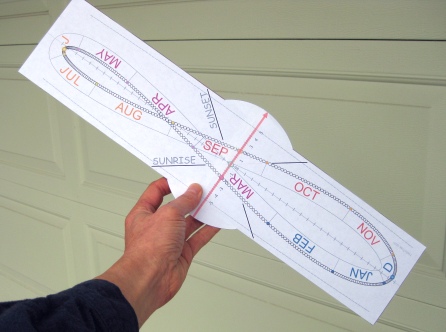How Much Astatine Is in the Earth's Crust?
Answer: 0.12 gram (see calculation below)
Astatine is often
described as the rarest naturally occurring
chemical element. It is so rare because it is radioactive and has a
short half-life -- 1.5 seconds for the most abundant naturally
occurring astatine
isotope, astatine-218. The only reason astatine
exists in nature is because
it is a decay
product of other, longer-lived radioactive elements.
To find out how much astatine exists in the Earth's crust, you need to determine the following:
The mass of the Earth is 6.0 x 1027 g. The crust makes up 0.005 of the total mass of the Earth. The concentration of astatine in the Earth's crust is 4 x 10-27. Therefore, the total amount of astatine present in the Earth's crust is:
6.0 x 1027 grams x 0.005 x (4 x 10-27) = 0.12 gram
The book Holleman-Wiberg's Inorganic Chemistry gives a figure of "3 x 10-24 % by weight" (3 x 10-26)
as the crustal abundance and "no more than 45 milligrams" (0.045 gram)
as the total amount of astatine in the Earth's crust. These figures
agree, within an order of magnitude, with the ones shown above.
gives a figure of "3 x 10-24 % by weight" (3 x 10-26)
as the crustal abundance and "no more than 45 milligrams" (0.045 gram)
as the total amount of astatine in the Earth's crust. These figures
agree, within an order of magnitude, with the ones shown above.
Many printed and online sources say that the total amount of astatine in the Earth's crust is "probably less than one ounce" or "about one ounce" or the equivalent in metric units ("about 25 grams"). However, no derivation is shown by these sources. Perhaps the originator of this estimate applied the crustal abundance calculation to the whole mass of the Earth, including the core and mantle, which would yield a total of 24 grams in the entire Earth. However, that would still be a questionable figure because the abundance of ancestor isotopes in the whole mass of the Earth is probably quite different from that of the crust.
 In
a sample of uranium ore rock containing one gram of uranium, there are
about five atoms of astatine at any given time. These atoms decay away,
and new ones are formed, at a rate of 2.6 atoms per second, as shown in
the simulation on the right. For details, see How Much Astatine is Present in a Uranium Ore Rock?
In
a sample of uranium ore rock containing one gram of uranium, there are
about five atoms of astatine at any given time. These atoms decay away,
and new ones are formed, at a rate of 2.6 atoms per second, as shown in
the simulation on the right. For details, see How Much Astatine is Present in a Uranium Ore Rock?
Explanation of the Table Columns
There are only four radioactive decay chains for heavy elements, representing the atomic mass numbers 4n, 4n+1, 4n+2, and 4n+3, where n
is an integer. In the thorium series, for example, the atomic mass
number (total number of protons and neutrons) of each isotope in the
decay chain is a whole multiple of 4. In a beta decay, an electron is
emitted, which doesn't affect the atomic mass number; or in an alpha
decay, a helium nucleus is emitted, which reduces the atomic mass number
by 4. So in any radioactive decay, the mass number either stays the same or decreases by 4.
All natural astatine isotopes are short-lived, with a half-life of 56 seconds or less, so the only reason any astatine exists in nature is because it is a product in the decay chain of some long-lived ancestor isotope. The ancestor element must have a half-life long enough that it hasn't all decayed away since the formation of the Earth 4.5 billion years ago. There are only three possible ancestor isotopes that exist in significant quantities in the Earth's crust: thorium-232, uranium-238, and uranium-235, which belong to the thorium series, radium series, and actinium series, respectively.
The longest-lived ancestor isotope in the neptunium series, neptunium-237, has a half-life of 2.1 million years, which is very short compared to the age of the Earth. If any ever existed, it has all decayed away. Therefore, none of the isotopes in the neptunium series exist in nature, except for bismuth and thallium at the bottom of the chain.
The half-life of each ancestor isotope is shown in seconds rather than years, for easier calculation of the descendent astatine isotope's abundance.
The crustal abundance of each long-lived ancestor isotope is the fraction of Earth's crust that consists of that element. The value shown is an average value taken from several sources. Most sources agree that the crustal abundance of uranium is 2 parts per million. Natural uranium consists of 99.3 percent uranium-238 and 0.7 percent uranium-235. The crustal abundance of thorium is variously reported from 5 to 12 parts per million. The table shows a mid-range value of 7 parts per million.
After geological time spans, all the descendent isotopes of a long-lived ancestor isotope accumulate to their respective secular equilibrium concentrations. Here "secular" means "existing over centuries" rather than "non-religious." Under equilibrium conditions, each isotope is newly created, and also decays away, at the same rate as the ancestor isotope. Thus, amount of each isotope in the chain remains constant, except for the final end product of the chain, which accumulates continuously.
The equilibrium concentration of each isotope in the decay chain is simply the ratio of the half-life of that isotope relative to that of ancestor isotope. For example, radium-226 is in the decay chain of uranium-238. The half-life of uranium-238 is 4.5 billion years and the half-life of radium-226 is 1,602 years, a ratio of roughly 3 million to one. Since radium decays 3 million times faster than uranium, for both elements to decay at the same rate, there must be 3 million times more uranium than radium in the rock. In any rock containing uranium, radium accumulates until it reaches an equilibrium concentration of one 3-millionth that of the uranium.
In the case of astatine, the crustal abundance of a particular astatine isotope is calculated as follows:
(crustal abundance of ancestor isotope) x [(half-life of astatine isotope)/(half-life of ancestor isotope)]
x (probability of decay to the astatine isotope) x [(atomic mass of astatine isotope)/(atomic mass of ancestor isotope)]
The atomic mass ratio factor adjustment is required because the equilibrium concentration using the half-life ratio is based on numbers of atoms, whereas we want the answer as a relative mass.
For example, in the radium series, which generates the highest contribution of astatine to the Earth's crust among all the chains, the concentration of astatine-218 is calculated as follows:
(2 x 10-6) x [(1.5)/(1.41 x 1017)] x 0.0002 x [218/238] = 4 x 10-27
The other decay chains produce negligible amounts of astatine by comparison.
In the thorium series, most information sources don't even mention any isotope of astatine in the chain, presumably because the probability of decay to astatine is some insignificant number. However, one source shows the probability of decay of polonium-216 to astatine-216 as 0.00013, and another source (Radioactivity: A History of a Mysterious Science )
shows the half-life of astatine-216 as 0.0003 second. I was unable
corroborate this information with other sources, which is the reason for
the question marks appearing in the table.
)
shows the half-life of astatine-216 as 0.0003 second. I was unable
corroborate this information with other sources, which is the reason for
the question marks appearing in the table.
In the actinium series, two isotopes of astatine appear in the decay chain, astatine-219 and astatine-215. Astatine-219 appears in a rare branch of another rare branch in the chain, which is the reason for showing two probability values in the table. The composite probability is the product of these two values. Astatine-215 appears in a rare branch of the main chain, so there is only one probability value shown.
More information: How
Much Astatine Is Present in
a Uranium Ore Rock?To find out how much astatine exists in the Earth's crust, you need to determine the following:
- What are the long-lived ancestor isotopes that give rise to astatine?
- How much of each ancestor isotope exists in the Earth's crust?
- What is the half-life of each ancestor isotope relative to the half-life of the astatine isotope in the decay chain?
- What is the probability of the decay-chain branch leading up to the astatine isotope?
| Decay
chain name |
Atomic
mass numbers |
Longest-lived ancestor isotope |
Astatine isotope in decay chain |
|||||
| Isotope |
Half-life (sec) |
Crustal abundance |
Isotope |
Half-life (sec) |
Probability of decay to At |
Crustal abundance |
||
| thorium series | 4n |
thorium-232 |
4.43 x 1017 | 7 x 10-6 | astatine-216 |
0.0003 (?) |
0.00013 (?) |
6 x 10-31 |
| neptunium
series |
4n+1 |
neptunium-237 |
6.75 x 1013 | none |
astatine-217 |
0.032 |
1.0 |
none |
| radium
(uranium) series |
4n+2 |
uranium-238 |
1.41 x 1017 | 2 x 10-6 | astatine-218 | 1.5 |
0.0002 | 4 x 10-27 |
| actinium
series |
4n+3 |
uranium-235 |
2.22 x 1016 | 0.014 x 10-6 | astatine-219 astatine-215 |
56 0.0001 |
0.00006 x 0.0138 2.3 x 10-6 |
3 x 10-29 1 x 10-34 |
The mass of the Earth is 6.0 x 1027 g. The crust makes up 0.005 of the total mass of the Earth. The concentration of astatine in the Earth's crust is 4 x 10-27. Therefore, the total amount of astatine present in the Earth's crust is:
6.0 x 1027 grams x 0.005 x (4 x 10-27) = 0.12 gram
The book Holleman-Wiberg's Inorganic Chemistry
Many printed and online sources say that the total amount of astatine in the Earth's crust is "probably less than one ounce" or "about one ounce" or the equivalent in metric units ("about 25 grams"). However, no derivation is shown by these sources. Perhaps the originator of this estimate applied the crustal abundance calculation to the whole mass of the Earth, including the core and mantle, which would yield a total of 24 grams in the entire Earth. However, that would still be a questionable figure because the abundance of ancestor isotopes in the whole mass of the Earth is probably quite different from that of the crust.
 In
a sample of uranium ore rock containing one gram of uranium, there are
about five atoms of astatine at any given time. These atoms decay away,
and new ones are formed, at a rate of 2.6 atoms per second, as shown in
the simulation on the right. For details, see How Much Astatine is Present in a Uranium Ore Rock?
In
a sample of uranium ore rock containing one gram of uranium, there are
about five atoms of astatine at any given time. These atoms decay away,
and new ones are formed, at a rate of 2.6 atoms per second, as shown in
the simulation on the right. For details, see How Much Astatine is Present in a Uranium Ore Rock? Explanation of the Table Columns
There are only four radioactive decay chains for heavy elements, representing the atomic mass numbers 4n, 4n+1, 4n+2, and 4n+3, where n
is an integer. In the thorium series, for example, the atomic mass
number (total number of protons and neutrons) of each isotope in the
decay chain is a whole multiple of 4. In a beta decay, an electron is
emitted, which doesn't affect the atomic mass number; or in an alpha
decay, a helium nucleus is emitted, which reduces the atomic mass number
by 4. So in any radioactive decay, the mass number either stays the same or decreases by 4. All natural astatine isotopes are short-lived, with a half-life of 56 seconds or less, so the only reason any astatine exists in nature is because it is a product in the decay chain of some long-lived ancestor isotope. The ancestor element must have a half-life long enough that it hasn't all decayed away since the formation of the Earth 4.5 billion years ago. There are only three possible ancestor isotopes that exist in significant quantities in the Earth's crust: thorium-232, uranium-238, and uranium-235, which belong to the thorium series, radium series, and actinium series, respectively.
The longest-lived ancestor isotope in the neptunium series, neptunium-237, has a half-life of 2.1 million years, which is very short compared to the age of the Earth. If any ever existed, it has all decayed away. Therefore, none of the isotopes in the neptunium series exist in nature, except for bismuth and thallium at the bottom of the chain.
The half-life of each ancestor isotope is shown in seconds rather than years, for easier calculation of the descendent astatine isotope's abundance.
The crustal abundance of each long-lived ancestor isotope is the fraction of Earth's crust that consists of that element. The value shown is an average value taken from several sources. Most sources agree that the crustal abundance of uranium is 2 parts per million. Natural uranium consists of 99.3 percent uranium-238 and 0.7 percent uranium-235. The crustal abundance of thorium is variously reported from 5 to 12 parts per million. The table shows a mid-range value of 7 parts per million.
After geological time spans, all the descendent isotopes of a long-lived ancestor isotope accumulate to their respective secular equilibrium concentrations. Here "secular" means "existing over centuries" rather than "non-religious." Under equilibrium conditions, each isotope is newly created, and also decays away, at the same rate as the ancestor isotope. Thus, amount of each isotope in the chain remains constant, except for the final end product of the chain, which accumulates continuously.
The equilibrium concentration of each isotope in the decay chain is simply the ratio of the half-life of that isotope relative to that of ancestor isotope. For example, radium-226 is in the decay chain of uranium-238. The half-life of uranium-238 is 4.5 billion years and the half-life of radium-226 is 1,602 years, a ratio of roughly 3 million to one. Since radium decays 3 million times faster than uranium, for both elements to decay at the same rate, there must be 3 million times more uranium than radium in the rock. In any rock containing uranium, radium accumulates until it reaches an equilibrium concentration of one 3-millionth that of the uranium.
In the case of astatine, the crustal abundance of a particular astatine isotope is calculated as follows:
(crustal abundance of ancestor isotope) x [(half-life of astatine isotope)/(half-life of ancestor isotope)]
x (probability of decay to the astatine isotope) x [(atomic mass of astatine isotope)/(atomic mass of ancestor isotope)]
The atomic mass ratio factor adjustment is required because the equilibrium concentration using the half-life ratio is based on numbers of atoms, whereas we want the answer as a relative mass.
For example, in the radium series, which generates the highest contribution of astatine to the Earth's crust among all the chains, the concentration of astatine-218 is calculated as follows:
(2 x 10-6) x [(1.5)/(1.41 x 1017)] x 0.0002 x [218/238] = 4 x 10-27
The other decay chains produce negligible amounts of astatine by comparison.
In the thorium series, most information sources don't even mention any isotope of astatine in the chain, presumably because the probability of decay to astatine is some insignificant number. However, one source shows the probability of decay of polonium-216 to astatine-216 as 0.00013, and another source (Radioactivity: A History of a Mysterious Science
In the actinium series, two isotopes of astatine appear in the decay chain, astatine-219 and astatine-215. Astatine-219 appears in a rare branch of another rare branch in the chain, which is the reason for showing two probability values in the table. The composite probability is the product of these two values. Astatine-215 appears in a rare branch of the main chain, so there is only one probability value shown.


